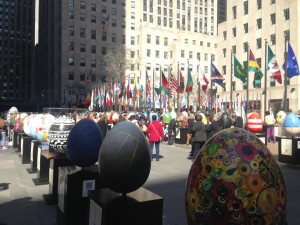3FER: 18 April 2014

#1: Easter Egg Hunt a la Fabergé
The luxury brand Fabergé launched the largest Easter egg hunt with nearly 300 designer-created eggs tucked across Manhattan. The effort will raise funds for two local charities, highlight the designer talents and give hunters a chance to win exclusive Fabergé jewelry.
When users are within 20 feet of an egg, the app pushes a message to them with specific designer information, and an invitation to check-in to increase their odds of winning. This is a great example of how proximity mobile tools can drive engagement. For more info, check out:
Fashionista: “Fabergé’s NYC Easter Egg Hunt Marks the Largest Beacon Deployment Ever in the U.S.”
[br]
#2: The SMS to WhatsApp Migration
SMS still dominates the messaging world, but messaging apps use is exploding–especially with millennials. WhatsApp dominates the space with half a billion users, but not globally. WeChat owns the China, and Line owns Japan and Indonesia.
Here’s another example of how mobile use is evolving faster than companies can adapt. And both marketers and politicos need to pay attention to this emerging trend:
Ad Age: “How Big Advertisers Are Using Next-Gen Messaging Apps Snapchat, Kik, Tango, Line, and WeChat”
India Times: “Political parties prefer WhatsApp to reach out to voters”
IGB Labs: “Messaging Apps: The New Face of Social Media and What It Means For Brands”
[br]
#3: App-Free Beauty
Marketers are app crazy, and it’s long been a frustration of mine. They believe consumers want an app to ‘engage with their brand’. (They don’t, but feel free to spend $250K to confirm it.) And app development shops are happily fostering this ignorance while cashing in on it.
Every now and then in my Quixotian anti-app quest I run across an example that floors me. One that proves you can create a beautiful and engaging mobile experience without building an app. Check out this gorgeous mobile web tour of Marseille from Google:
Google: “ Night Walk in Marseille”
